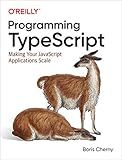Best JavaScript Tools to Buy in December 2025

Programming TypeScript: Making Your JavaScript Applications Scale



Tcl/Tk Pocket Reference: Programming Tools



STREBITO Electronics Precision Screwdriver Sets 142-Piece with 120 Bits Magnetic Repair Tool Kit for iPhone, MacBook, Computer, Laptop, PC, Tablet, PS4, Xbox, Nintendo, Game Console
-
COMPLETE KIT: 120 BITS AND 22 ACCESSORIES FOR ALL YOUR REPAIR NEEDS.
-
ERGONOMIC DESIGN: COMFORT GRIP HANDLE AND FLEXIBLE SHAFT FOR EASY USE.
-
ORGANIZED STORAGE: TEAR-RESISTANT BAG KEEPS TOOLS SECURE AND PORTABLE.



Kaisi Professional Electronics Opening Pry Tool Repair Kit with Metal Spudger Non-Abrasive Nylon Spudgers and Anti-Static Tweezers for Cellphone iPhone Laptops Tablets and More, 20 Piece
- VERSATILE KIT FOR SMARTPHONES, LAPTOPS, TABLETS, AND MORE REPAIRS.
- DURABLE STAINLESS STEEL TOOLS ENSURE LONG-LASTING, PROFESSIONAL USE.
- COMPLETE CLEANING AND REPAIR TOOLS FOR A FLAWLESS DEVICE FINISH.



JavaScript and jQuery: Interactive Front-End Web Development
- MASTER JAVASCRIPT & JQUERY WITH CLEAR EXAMPLES AND DIAGRAMS!
- LEARN CORE PROGRAMMING CONCEPTS IN A SIMPLE, ENGAGING WAY!
- BOOST YOUR CODING SKILLS WITH INSPIRING, EASY-TO-FOLLOW GUIDES!



Testing JavaScript Applications


To remove a handler using a d3.js selector, you can follow the steps:
- Select the element(s) using the d3.js selector function. This can be done using the d3.select() or d3.selectAll() methods, depending on whether you want to select a single element or multiple elements.
- Chain the on() method to the selected element(s). This method allows you to specify event handlers for various events.
- Use the null value as the second argument in the on() method to remove the existing event handler(s) from the selected element(s).
Here is an example that demonstrates how to remove a click event handler from a specific element with an id of myElement:
d3.select("#myElement").on("click", null);
In this example, the d3.select() function selects the element with the id myElement, then the on() method is called to remove the click event handler by passing null as the second argument.
By executing the above code, the previously attached click event handler for myElement will be removed.
It is important to note that this approach only removes event handlers that were attached using the same d3.select() and on() methods. If you want to remove event handlers attached via other methods, you would need to use an alternative approach.
How do I remove a handler for child elements within a selected element using a D3.js selector?
To remove a handler for child elements within a selected element using a D3.js selector, you can use the selection.on method. Here's an example:
Suppose you have a selection d3.select("#parent") that represents the parent element, and you want to remove a click event handler from its child elements:
// Select the parent element var parent = d3.select("#parent");
// Select the child elements within the parent var children = parent.selectAll(".child");
// Remove the click event handler from the child elements children.on("click", null);
In the above example, the selectAll method is used to select the child elements with the class child within the parent element. Then, the on method is called on the children selection to remove the click event handler by passing null as the second argument.
Make sure to replace "#parent" and ".child" with the appropriate selectors based on your HTML structure.
How to remove a click event handler using a D3.js selector?
To remove a click event handler using a D3.js selector, you can use the on() function along with the null argument for the event type.
Here's an example:
- Assume you have a button with an id attribute of myButton:
Click me
- In your JavaScript code, you can select the button using D3.js selector and remove the click event handler using the on() function with null as the second argument:
d3.select("#myButton").on("click", null);
By passing null as the second argument, you effectively remove the click event handler associated with the selected element.
How to identify the correct selector to remove a handler in D3.js?
To remove an event handler in D3.js, you need to identify the correct selector for the corresponding element or elements. Here are a few steps to assist you in finding the correct selector:
- Inspect the element: Right-click on the element that has the event handler and select "Inspect" (or the equivalent option based on your browser). This will open the Developer Tools, where you can analyze the HTML structure and properties of the element.
- Identify unique attributes: Look for attributes that make the element unique. These could include an id attribute, a certain class, or any other attribute that is specific to the element you are targeting.
- Traverse the DOM: If the element does not have any unique attributes, you may need to traverse the DOM tree to reach a parent element that has a unique identifier. For example, you can identify a parent container element with an id and then find the child element through appropriate selectors.
- Test your selector: Once you have identified a potential selector, you can test it in the browser's console. Use the $ function provided by D3.js and select the element using the selector you found. If the element is selected correctly, D3.js will return it as an object in the console.
- Remove the event handler: Once you have a valid selector, you can remove the event handler using the .on() function provided by D3.js. Pass the selected element or elements to the .on() function along with the event type and null as the handler. For example, d3.select('#myElement').on('click', null).
It's important to note that removing a handler does not remove any other attributes or styles applied to the element. It only removes the event functionality.
